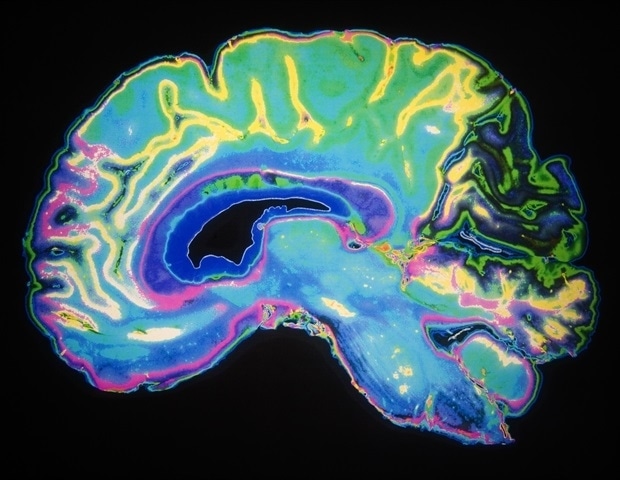
The human immunodeficiency virus – 1 ( HIV ) introduces a copy of its DNA into human immune cells during its life cycle. HIV latency is the term used to describe the long-term transition of some of these newly infected immune cells into a dormant, latent state.
HIV that is latent cannot be eradicated by current therapies, such as current antiretroviral therapy( ART ), which can successfully prevent the virus from replicating further. The virus may recover from latency and restart the progression of HIV infection to AIDS if treatment is ever stopped.
The location of these latent cells’ hiding places in the body has been a focus of research by researchers from the HIV Cure Center at the UNC School of Medicine, University of California San Diego, Emory University, and Universities of Pennsylvania. The ability of microglial cells, which are specialized immune cells with a ten-year lifespan in the brain, to act as an effective viral reservoir for latent HIV, has been confirmed by recent research published in Journal of Clinical Investigations.
Microglial cells act as a persistent brain reservoir, as we now understand. Although this had been hypothesized in the past, there was no evidence in humans. Our technique for isolating healthy brain cells offers a fresh framework for upcoming research on central nervous system reservoirs and, ultimately, initiatives to eradicate HIV.
Yuyang Tang, PhD, first author, assistant professor of medicine at the Division of Infectious Diseases, and UNC HIV Cure Center member
HIV that is latent
HIV is a challenging and distinctive virus to research. The CD4 + lymphocytes, which are the primary mediators of the immune response, are specifically targeted by the virus during infection. The virus eventually kills enough CD4 + cells to result in immunodeficiency.
Latent HIV can be concealed within a small number of the remaining CD4 + T cells in the body and the bloodstream, according to prior research. However, it has been hypothesized that in HIV patients receiving effective ART, additional viral reservoirs may be concealed within the central nervous system( CNS ).
Accessing and analyzing brain tissues for the study of HIV reservoirs is very challenging, in contrast to peripheral blood cells. The potential viral reservoir in the brain has been a mystery for many years because it is unsafe to sample these types of cells in people receiving ART.
removing only brain tissue
To better understand how to extract and purify viable cells from primate brain tissue, the team first examined macaques’ brains infected with the simian immunodeficiency virus ( SIV ), a virus that is closely related to HIV.
To selectively remove cells that were expressing microglial surface markers, researchers used antibodies and physical separation techniques. The highly pure brain myeloid cells were then isolated and distinguished from the CD4 + cells moving through the brain tissue.
Researchers then collected samples from HIV + individuals who had signed up for” The Last Gift” Study at the University of California San Diego( UCSD) using these methods. Altruistic HIV + people who are receiving ART but also have other terminal illnesses will donate their bodies to the HIV research project as part of this special and significant effort.
The samples come from HIV-positive individuals who are receiving treatment but are also dealing with a fatal illness, according to co-author David Margolis, MD, the Sarah Kenan Distinguished Professor of Medicine, Microbiology & amp, Immunology, and Epidemiology. In the months leading up to their passing, they were willing to take part in the research program in addition to donating their bodies to science. It’s a remarkable program that enabled this important research.
upcoming projects
The researchers are now thinking about strategies to target this kind of reservoir because they are aware that latent HIV can hide in microglial cells in the brain. Researchers think that latent HIV has evolved unique characteristics to replicate in the brain because it differs so greatly from the virus at the periphery.
According to senior author Guochun Jiang, PhD, an assistant professor in the UNC Department of Biochemistry and Biophysics and a member of the HIV Cure Center,” HIV is very smart.” It has evolved over time to have epigenetic control over its expression, which prevents the virus from being able to escape immune clearance and hide in the brain. We are beginning to understand the special mechanism that enables HIV to remain active in brain microglia.
One of the crucial signaling pathways that regulates HIV expression elsewhere in the body is NF-B signalING. HIV enters latency in the peripheral blood when NF-B signaling is” turned off.” However, the activation of NF-B signaling has no effect on latent HIV in the brain. The reason for this is unknown to researchers, but once a solution is discovered, they will be one step closer to understanding how to specifically target and eradicate the virus in the brain or peripheral blood. The researchers are attempting to ascertain the actual size of the latent HIV brain reservoir in addition to comprehending the inner workings of that reservoir.
Margolis, who also serves as the director of the UNC HIV Cure Center, said,” It is very difficult to determine how big the reservoir is.” The issue with trying to eradicate HIV is comparable to the cancer epidemic. You want to be able to obtain everything so that it won’t be returned.
